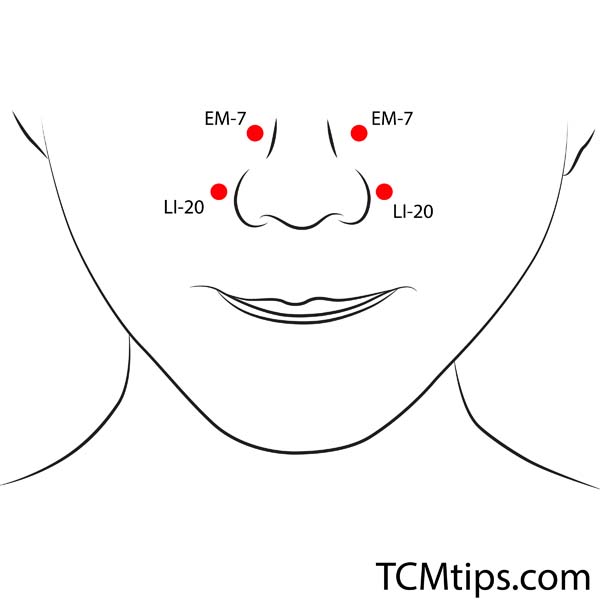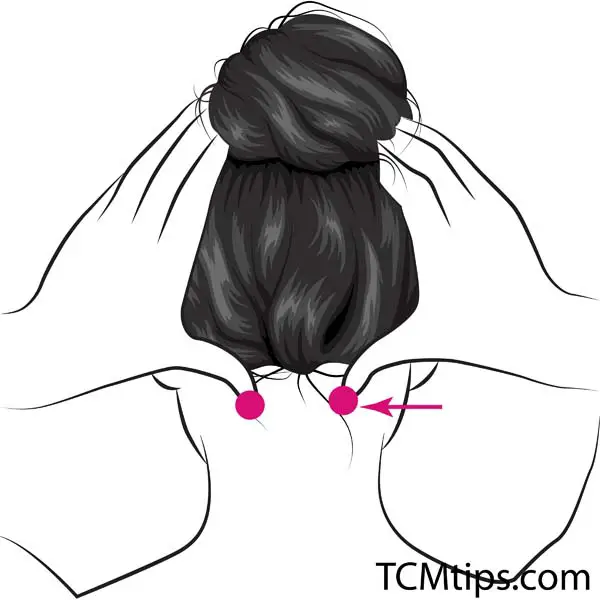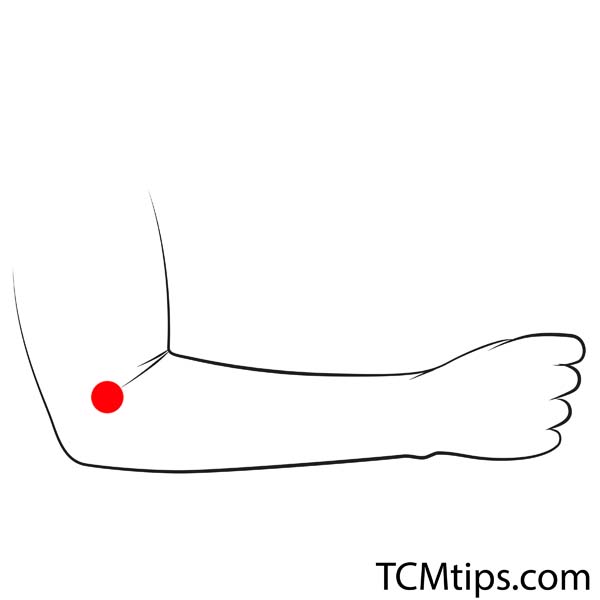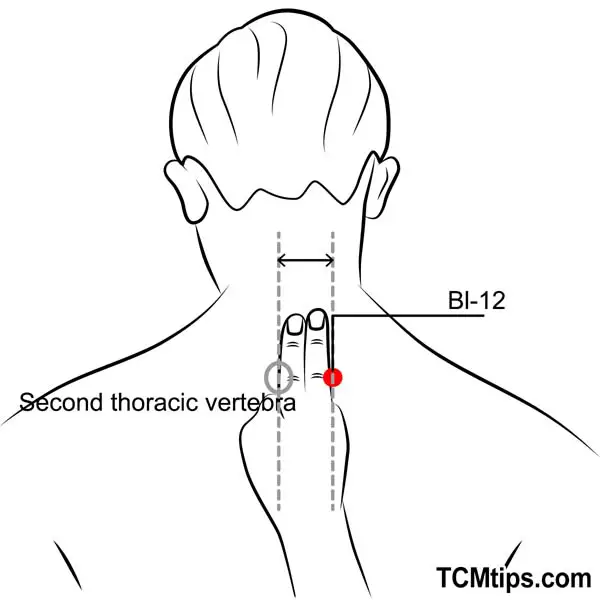A runny nose is mostly caused by the common cold, or cold as we generally call it, and in Traditional Chinese Medicine (TCM), the common cold is regarded as an evil that comes with the wind. It penetrates the body when your immune system is weak. So, to prevent cold and runny nose, TCM uses the pressure points for the runny nose to boost the immunity and fortify it against cold.
What Is A Runny Nose?
A runny nose is a condition whereby mucus drips or runs down your nostrils. Mucus on its own isn’t a bad thing. In fact, nasal mucus is a protective substance in the nose that is produced by the mucous membrane that moistens the air we breathe and serve as a barrier for dust, pollen, and bacteria that can get in through our nostrils and cause harm to our lungs.
A runny nose is caused by the common cold, excess exposure to a cold atmosphere, flu, allergies, or gustatory rhinitis, a nonallergic inflammation of the nasal tissues that is caused by eating certain foods. Rhinitis is simply the inflammation of the nasal tissues, but as it always makes the nose run, it is often used simultaneously with the runny nose.
In this article, I’ll focus mostly on acupressure for runny noses caused by colds and flu. However, we also have another article that talks about acupuncture points for flu.
Should You Get Acupuncture When You Have A Cold?

The common cold is a very common medical condition affecting humans. However, in terms of treatment, it is uncommon because there is no specific effective treatment for it in Western medicine. It is for this reason that acupuncture and acupressure treatment is the best option for cold. For over two thousand years, acupuncture has been used effectively in reducing the symptoms of the common cold.
You should get acupuncture treatment when you have a common cold because it has a lot of benefits. Firstly, it boosts your immune system and makes you less susceptible to the common cold. Secondly, it helps to relax your body, loosen your muscles, and improve blood circulation in your body. Lastly, it relieves the tension that builds in the muscle of the neck, shoulders, and back that is brought about by coughing and sneezing.
A 2018 research confirms that acupuncture is a valid treatment for the common cold but went ahead to test its efficacy and safety. At the end of the research, the researchers recommended acupuncture as an effective, safe, low-cost, and environmentally friendly method of relieving the symptoms of the common cold.
How To Stop Runny Nose Pressure Points
Now that you know that acupuncture and acupressure are effective treatments for the common cold and runny nose, the next question would be, what are the pressure points for a runny nose? Based on a 2020 research that tested the efficacy of acupuncture at three nasal acupressure points for perennial allergic rhinitis (PAR), about eleven acupoints were used for treatment.
These acupoints include Yintang (EX-HN3), Yingxiang (LI-20), Shangyingxiang (EX-HN8), Feishu (BL-13), Dazhu (BL-11), Fengmen (BL-12), Taiyuan (LU-9), Zusanli (ST-36), Dazhui (GV-14), Dingchuan (EM-20), and Tiantu (Ren-22).
While this list isn’t exhaustive, I discuss the six most effective pressure points for a runny nose below.
Acupoint: EM-7 (Other Names: Bi Tong)

EM-7 is the first pressure point for a runny nose. In Chinese, it is called Bitong, which means Penetrating the Nose. It is an extra acupoint that is located on the face, at both sides of the nose. You’ll find EM-7 at the starting point of the nasolabial groove or laughter line.
in TCM, Bitong benefits the nose. Stimulating Bitong helps to promote local qi and blood circulation as well as relieve nasal congestion. It is for this reason that Bitong is also used to treat rhinorrhea and soreness in the nasal region. It also serves as acupressure for sinus inflammation.
However, when pushing Bitong for a runny nose, it is best to warm up the acupoint in addition to applying pressure.
Acupoint: GB-20 (Other Names: Gallbladder-20/Feng Chi/Wind Pool)

The next acupressure for cold and runny nose is GB-20. In Chinese, this acupoint is called Fengchi, which means Wind Pool. This gall bladder meridian acupoint is located at the back of the head. You’ll find it on both the left and right sides of the base of your skull, at the point where the neck joins the skull.
In Eastern medicine, GB-20 helps to chase away both external and internal wind and clear the head. It also helps to resolve issues relating to the eyes, nose, and ears. This is why it is used clinically to relieve the symptoms of the common cold, chronic nasal congestion, dizziness, and neck pain. It is also acupuncture for swollen turbinates that works.
Acupoint: GV-14 (Other Names: The Governing Vessel-14/Da Zhui/Great Vertebra)

GV-14 is another effective pressure point to stop a runny nose. This governing vessel acupoint is called Dazhui in Chinese, which translates to Big Vertebrae. The name is practically derived from its location. You’ll find GV-14 in the depression below the seventh cervical process, which is the bone at the back that bulges when you bend your neck forward.
Dazhui is located at a point where all yang channels converge. The acupoint’s location happens to be one of the places in the body where exogenous wind can easily enter the body. Therefore, to prevent this from happening, you have to push this acupoint. Doing this will open the yang, clear the brain, and calm the spirit.
Based on these functions of GV-14, it is one of the acupressure points for fever, and it is used clinically to treat malaria, neck pain, blood diseases, seizures, and asthma.
Acupoint: LI-20 (Other Names: Large Intestine-20/Ying Xiang/Welcome Fragrance)

LI-20 is one of the pressure points for a runny nose that you should never forget. It is called Yingxiang in Chinese, which means Welcome Fragrance. It is located on the face, just like Bitong. In fact, once you’ve located Bitong, you’ve located Yingxiang. LI-20 is located on both sides of the nose, at the lower border of the curved wall of the nostrils, and at about the midpoint of the laughter lines.
In TCM, LI-20 functions as a dispeller of wind. It helps to open the nose and improve breathing as well as clear heat. This is why it is mostly used to treat nasal congestion. It is also one of the acupressure points for skin tightening, wry face, and epistaxis.
Acupoint: LI-11 (Other Names: Large Intestine-11/Qu Chi/Pool at the Crook)

LI-11, Quchi, or Pool at the Crook is one of the acupressure points for a runny nose that will always come in handy. It is one of the most popular pressure points for cold. This large intestine acupoint is located on the hand. To locate it, bend your elbow. The point where the wrinkle ends, just before the edge of the bone of the elbow joint, is LI-11.
In TCM, the job of LI-11 is to clear heat, cool blood, resolve dampness, regulate Qi and Blood, and expel exterior wind. When you massage LI-11, you promote blood circulation in your upper body, increase your body metabolism, and improve your body tone.
Because LI-11 is such a versatile acupoint with natural healing powers, it is used clinically to treat fever, sore throat, headache, body ache, dizziness, eczema, and abdominal pain. You can also use it as one of the acupressure points for cold hands and feet.
Acupoint: Bl-12 (Other Names: Urinary Bladder-12/Feng Men/Wind Gate)

The last acupoint on my list that serves as acupressure for a runny nose is Bl12. In Chinese, Bl-12 is called Fengmen which literally means Wind, as in cold, and Gate, as in a door or entrance. TCM considers Bl-12 as a point of entry of cold in the body. You’ll find Bl-12 about 2 finger-width from the border of the second thoracic vertebra. In other words, it is beside the 2nd thoracic vertebra, on the upper part of the back.
Because Bl-12 is a doorway to cold in TCM, stimulating the acupoint is effective for preventing cold and stopping the one already in the body from getting worse. It is like closing the door to cold. Massaging this acupoint will not only prevent a cold but also stop fever, cough, and pain in the chest or the back. It is also acupressure for the heart.
However, because of the location of this acupoint, it is best when you get someone to push it for you. The person doing this for you should use a hair dryer to warm the area around the shoulder blades while massaging Bl-12.
Conclusion
Acupressure is one of the most effective treatments for a runny nose that is caused by the common cold or flu. While there are a number of acupoints that you can push when you have a runny or stuffy nose from a cold, you should push the following acupressure points for a cold for the following reasons:
- EM-7 as it helps to relieve nasal congestion and promote the flow of blood and qi;
- GB-20 as it dispels external wind, the major cause of the common cold;
- GV-14 as it opens the yang, clears the brain, and calms the spirit;
- LI-20 as it opens the nose and improves breathing;
- LI-11 as it aids blood circulation in the upper body and improves body metabolism and toe; and
- Bl-12 as it prevents cold from entering the body or the one already in the body from getting worse.
 P. Sze
P. Sze 


















